Imagine investing in a sleek, high-tech solar panel system only to see its efficiency decline due to hidden cracks or other damage. Solar panel failure is extremely rare – less than 0.1% of all usage cases — but they are still happening.
- Micro-cracks and hot spots reduce panel efficiency, creating damage.
- High voltage imbalances cause internal harm.
These and other threats compromise clean energy savings, safety, and finances by lowering output and aging panels faster. Yet, this is fixable. All you need is external knowledge and proactive action. Once you find out what caused a cracked solar panel, you are one step closer to bringing back the full power of your clean energy system.
In this article, we share comprehensive solar panel insights. Discover causes, types of solar panel cracks, and cost-effective fixes. Learn to combat these hidden threats to your clean energy goals.
What Causes Solar Panels To Break?
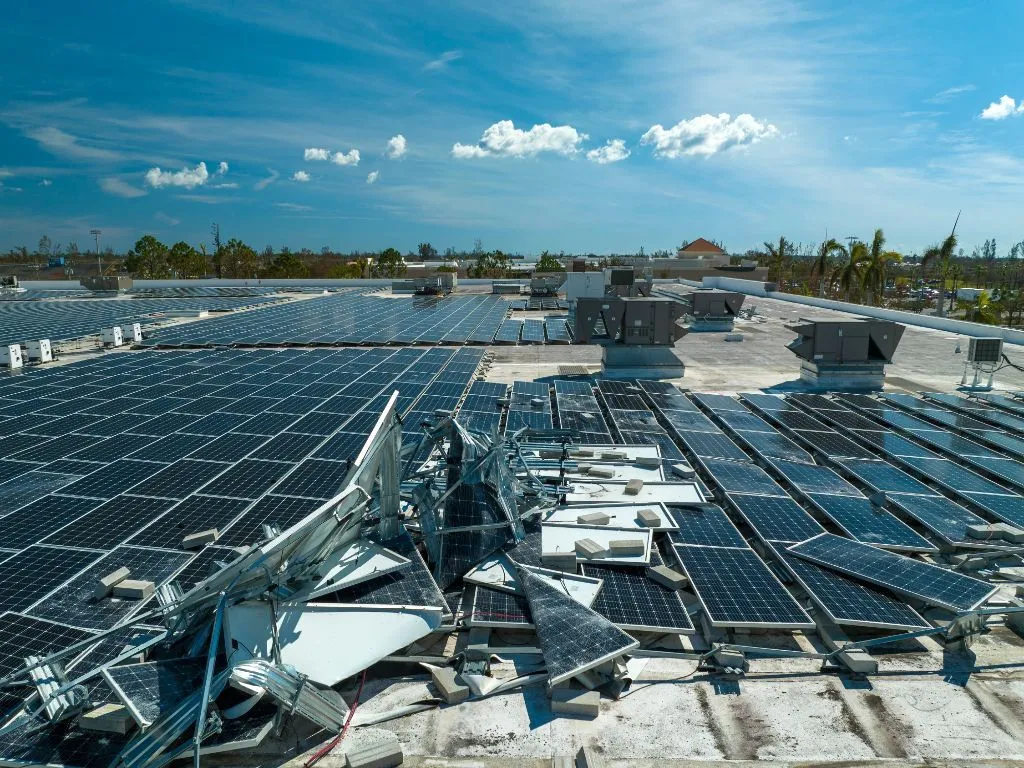
Solar panels are durable as they are designed to withstand the harsh weather conditions. However, even the most robust panels are not invincible. They still can get damaged due to one of these reasons:
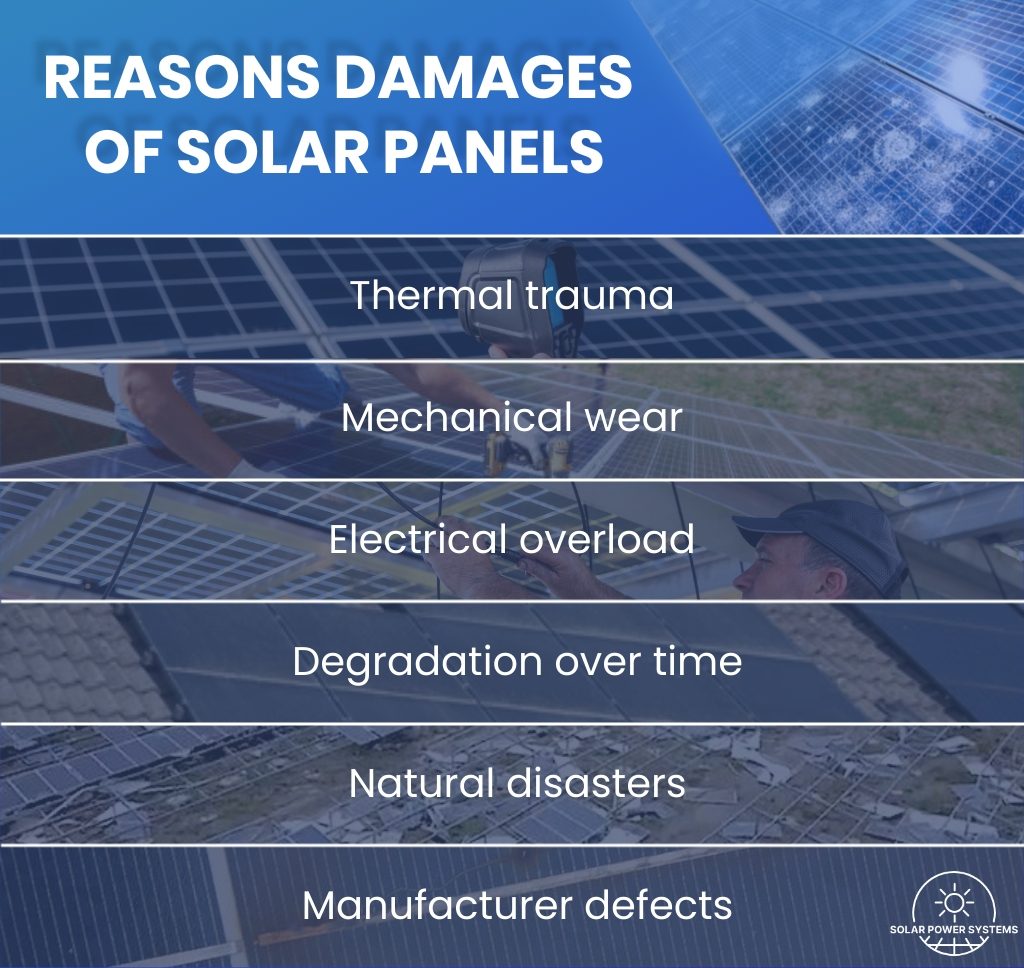
Each solar panel has its temperature limits, even the best ones. Usually, working temperature ranges from -10 °C to 50 °C. Once the heat surpasses this target, it may lead to the inevitable consequences.
Extra temperature conditions may cause solar panel cracks, compromising the device’s efficiency. Overheating can even cause panel distortion, hotspots, and further damage.
Another reason for the broken panel is the mechanical mayhem. Solar panels are resilient but not entirely immune to physical impact. Hailstorms and falling debris can damage the panel. Once a tiny particle falling at full speed reaches the panel, it can slightly shutter the glass.
In most cases, solar panel hail damage is not severe, so you don’t need to rush to the local technician. However, cracked panels become extremely vulnerable to water ingress and electrical failure. You should book the restoration so the technician can replace a broken panel with a completely new one.
Solar panels convert sunlight into electricity, but sometimes, that electricity can fight back. If a lightning strike hits the panel, it can fry the panel’s internal circuitry, making it useless. Also, you should check the correct wiring. It is vital for power generation systems. Improper wiring can cause the current to flow backward, overheating the panel and potentially causing a fire.
Lightning strikes can fry internal circuitry, rendering solar panels useless. In this case, correct wiring is crucial; errors can overheat panels, leading to fire hazards.
Over time, all solar panels will degrade to some extent. It can be caused by many factors, including:
- Ultraviolet (UV) radiation
- Heat
- Moisture
A study by the National Renewable Energy Laboratory (NREL) found that the average degradation rate of solar panels is approximately 0.50%. Even after 20 years, you can still expect your solar output to be 80%+ of its original output.
No machine is perfect; unfortunately, some panels leave the factory with hidden flaws. Damaged solar panels often have defective cells in the silicon cells. They can disrupt power generation and lead to premature failure.
A couple of faulty cells may not impact much, but crossing 2-3% becomes noticeable. Faulty connections due to poor soldering or weak materials pose risks of overheating or breaking.
Will a Cracked Solar Panel Still Work?
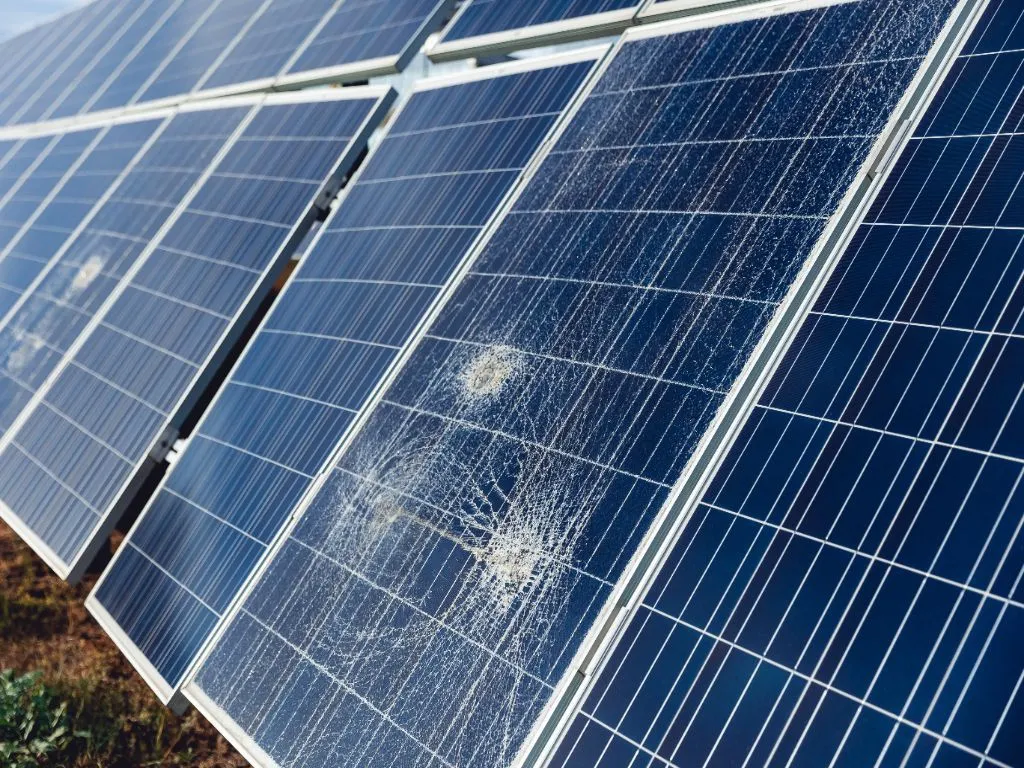
Yes, a broken solar panel can still produce power. However, its efficiency would be lower than usual. The reduction amount depends on the crack severity. A small fissure may only reduce efficiency by 1-2%, while a large crack can reduce efficiency by 50% or more.
Cracked solar panels are also more likely to fail. Even a tiny fracture can weaken the panel’s structure, making it more susceptible to further damage. Here are some of the things you may face once a solar panel breaks:
- Reduced efficiency: The crack interferes with the power flow, reducing panel output.
- Hotspots: The fracture can create hotspots, leading to further damage.
- Water ingress: Water can enter the panel through the fissure. It will corrode the internal components and cause electrical failure.
- Complete failure: The panel may fail if the crack is severe enough.
Types of Solar Panel Damage
Once you spot the damage, contact your local technician and specify the solar panel crack. Providing these details saves time and helps technicians address your case more effectively.
There are seven most common types of solar panel damage:
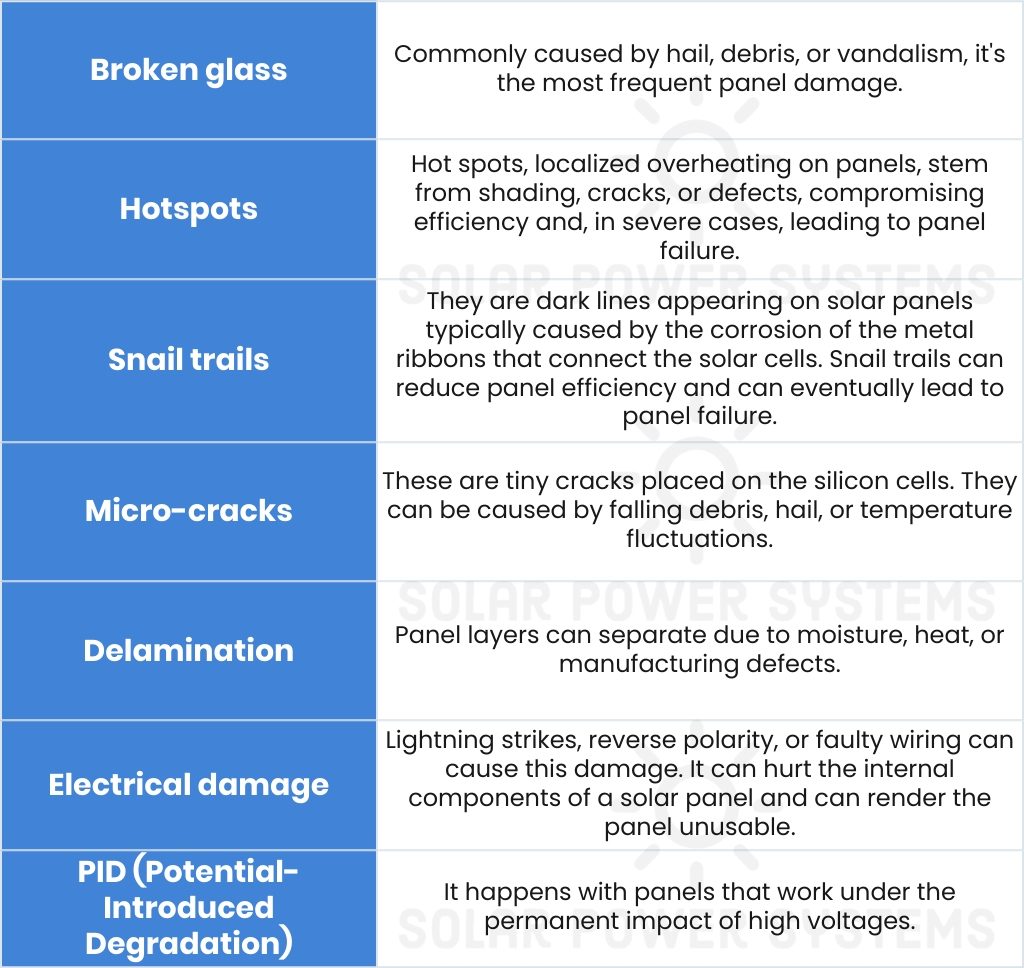
Does a Cracked Solar Panel Need Repair if It Works Fine?
Some people can say that they don’t need to fix a panel if it’s working. However, they forget that damage grows over time. It may cost $200-300 for the minor problem at the beginning, but once time passes and it becomes more severe, you may end up paying $1,000+. It’s unpleasant, but it’s the harsh consequences of neglect.
The cracked panel may work for weeks without losing performance in warm, windless, and rainless weather. However, the first rain or cold may lead to permanent damage, forcing you to replace a whole panel.
While a cracked solar panel may still function to some extent, we recommend you have it repaired for several reasons:
- Reduced efficiency: Even a minor solar panel crack can impede electricity flow, leading to a gradual or rapid decline in power generation until the panel fails. The rate of decay is unpredictable and varies based on individual circumstances.
- Structural weakness: A crack weakens the solar panel’s structural integrity, making the station far more susceptible to hail, wind, or other debris damage. If left unattended, the crack worsens, leading to complete panel failure.
- Safety hazards: Broken solar panels pose safety risks due to the increased electrical hazard potential. Raindrops and snow can penetrate the cracks and corrode internal components, which increases the risk of electrical shocks or fires.
- Warranty issues: Many solar panel companies provide warranties that cover the most common defects and damages. Yet, if problems arise due to neglecting maintenance, like disregarding a cracked panel, the warranty might be nullified by the solar panel provider.
- Loss of aesthetics: A cracked solar panel can diminish the visual appeal of the house.
In summary, a cracked solar power system breaks slowly. However, it is crucial to address the damage promptly to prevent further deterioration. It will safeguard your solar investments and ensure you continue to enjoy the benefits of clean, renewable energy.
Whether You Should Fix Solar Panels On Your Own: A Professional Advice
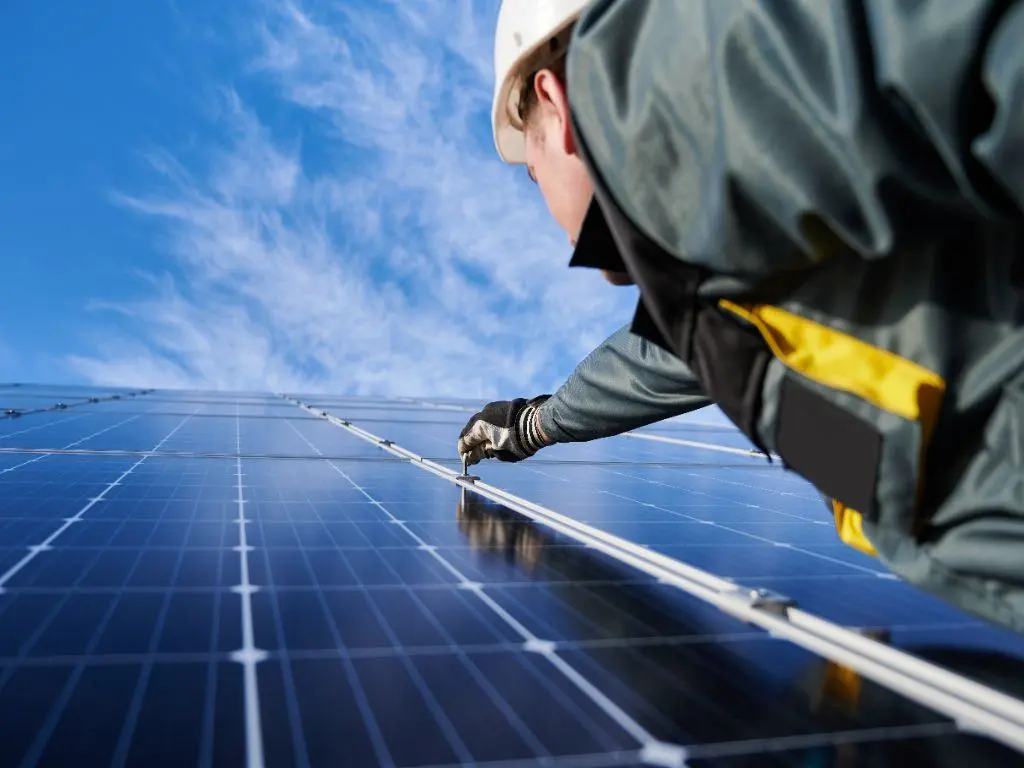
Many users have asked our technicians, “Will a solar panel work if the glass is cracked?” We understand your concerns. In most cases, it will still work. However, we recommend you call a technician to fix the issue immediately without replacing the panel if it is not severe.
We don’t recommend you fix it on your own. In most situations, minor harm or deterioration falls under the warranty. It means that a specialized technician can fix it for free. However, attempting to fix it yourself will void the warranty.
You should disregard guides that recommend you use epoxy seal kits to fill in the damaged area. While numerous self-help guides exist, following them can increase the damage, ultimately leading to the termination of your warranty.
Assessing Solar Panel Power Output: Techniques and Crack Impact Analysis
Solar panel maintenance is crucial to maximize energy generation and savings. You can use automatic monitoring systems or measure everything manually.
- Dedicated monitoring systems offer real-time insights into individual panel performance, energy production, and historical data analysis. It eases the deviation detection and identification of the underperforming panels.
- With the manual method, you should use a multimeter to measure wattage, voltage, and current at the panel’s output terminals. Calculate power output by multiplying voltage and current. To identify significant discrepancies, compare the measured value with the panel’s rated power output.
Here are some solar panel care techniques:
- Pick the solar panel installation area with minimal risk of debris or overheating, safeguarding your panel in advance.
- We recommend you conduct measurements on clear, sunny days at moderate temperatures. It provides you with the most clear results.
- Regularly measure output to track changes and identify potential issues early. Provide these measurements to the technician to detect damage faster and get more protection in the future.
- Maximize the performance by regular solar panel maintenance, system upgrades, and optimized energy consumption.
- You must clean your panels once every few months. If your region has regular snowfalls or strong winds, consider cleaning after each episode of bad weather. Removing snow and debris has a positive impact on solar panel performance.
- Use robust mounting systems to ensure the panels remain firmly anchored. Install hail guards to get additional protection against hail damage. It’s vital for windy regions or places prone to severe storms.
Protecting Your Solar Investment: Strategies for Preventing and Minimizing Panel Damage
A solar panel system is valuable, providing clean energy and generating significant savings. If you don’t want to turn them into liabilities that sunk money from you, prevent the potential damage.
You should keep an eye on the solar system’s performance for atypical voltage drops or imbalances. Investing in surge protectors can shield your system from lightning strikes and other dangers of solar panels, offering long-term benefits. Plus, scheduling technician inspections once a year is a must — it ensures early detection of potential issues.
By implementing the discussed strategies, you can effectively prevent and mitigate potential damage to your solar panels. You will ensure they remain operational and continue to generate clean energy for your home or business for years.
Maintaining and preventing solar panels cracking is key to maximizing the lifespan and performance of your solar investment, safeguarding energy savings, and contributing to a sustainable future.


